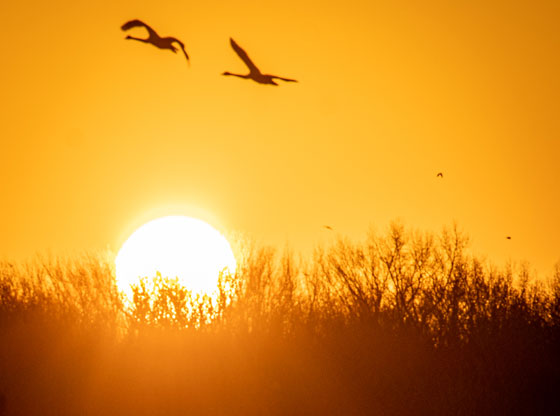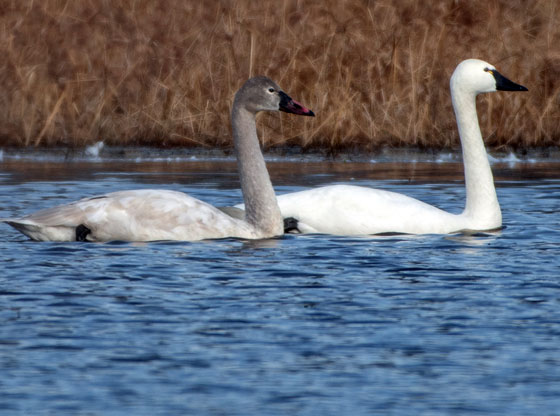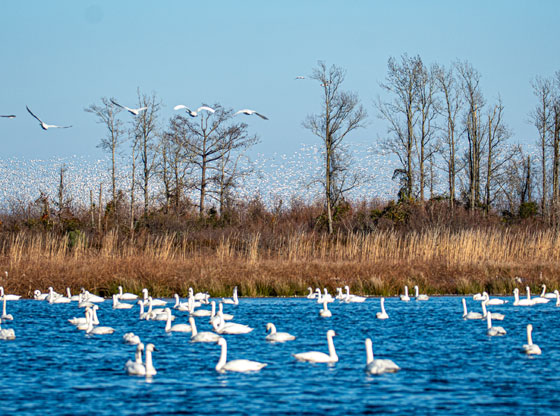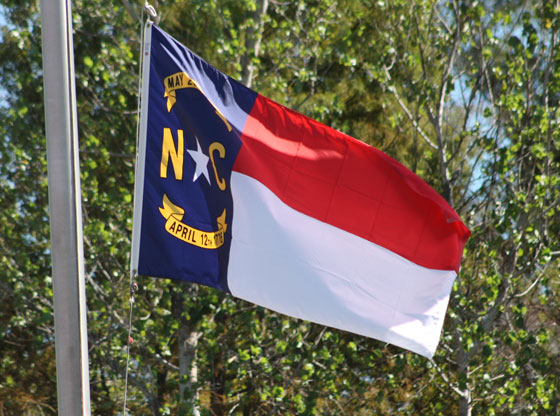A Remote Area of Eastern North Carolina Along the Coastal Plain
Travel on Highway 15/501 to Route 1 north, then eastbound on Rt. 64 from Raleigh through Rocky Mount, Tarboro and Jamesville (population 491) until you get to Plymouth on the Roanoke River before it empties into Albemarle Sound. At this point, ditch the GPS for fear of getting hopelessly lost, follow N.C. Highway 45 south, take a left at the Hyde County Egg Farm sign and soon leave paved roads behind.
Welcome to the Interbanks. You have just entered the Pocosin Lakes National Wildlife Refuge, Pungo Unit in Hyde County. It’s been an easy three and a half-hour drive from Moore County.

The last full moon of 2020 rises above Pungo Lake in coastal eastern North Carolina. The area is home to wintering Tundra swans and snow geese.
Looking over the vast and expansive landscape makes one appreciate quiet places. An amazing 110,000 acres in eastern North Carolina have been set aside as prime wintering grounds for flocks of migratory birds like the Tundra swan and snow geese.
The land is flat, baron and removed from human development.
In a cycle that has remained unchanged for centuries, tens of thousands Tundra swans migrate to the coastal plains of North Carolina for the winter each year. They come to Hyde County along the Atlantic Flyway from the Arctic tundra regions of northern Alaska and western Canada in large flocks, finding food in plowed fields and protected areas such as Lake Mattamuskeet, Pea Island and Pungo Lake, where I found them in December of 2020.
Small numbers of Tundra swans appear in the grey skies in mid-November and continue to arrive from their Arctic nesting grounds, reaching peak numbers in January. By mid-February each year, they begin their migration north.
Spend time outdoors watching nature, and you’ll realize that things are good in this world. Notice a bald eagle gracefully sweep across the sky. Witness a red-tailed hawk sore above looking for prey on the ground. Come upon a family of river otters playing in a creek together.
Tundra Swans
The main attraction are the Tundra swans. They spend the night in the safety of Pungo Lake and small, nearby ponds and impoundments. When sunrise comes, they leave in small groups and steady streams for the cornfields to eat before returning again after dark.

Wintering Tundra swans spend their nights in the safety of Pungo Lake and small, nearby ponds. When sunrise comes, they leave in small groups and steady streams for the cornfields to eat before returning again after dark.
I stood at the edge of one of the small, shallow ponds watching them in the yellow light of sunrise and stayed the entire day until the sunlight faded into wintery twilight.
Entirely white with straight, long necks and a large, heavy body, the swans bob their small heads as they gracefully move across the pond. Some appeared to be sleeping, others grooming themselves and still others just content to be left alone.
As they take flight, they line themselves into the wind and seem to run on the water, slapping their wings and feet, before building up enough momentum to take their lumbering bodies into the air.
When time comes to return to the water, they bank in from one direction, turn into the wind losing altitude the entire time, then use their wings like a speed brake. Webbed feet acting like landing gear, they splash down somehow avoiding fellow swans already in the pond.
Tundra swans take off and land as mating pairs together with their offspring. Young swans can be identified by their light gray color, especially around the heads, which turn white at the end of the first year. As early as their second year, they leave to find a mate. It is thought that Tundra swans live 20 or more years in the wild.

A mother Tundra swan and her offspring. You can tell the first-year juveniles by the light gray color, which will turn to all white in the spring. The pink-colored bills of Tundra juveniles turn black by the end of the first year.
Apart from the stark but beautiful landscape and magnificent display of nature all around, one memory stands out.
I arrived in pitch dark to await the sunrise at a pond filled with swan. The only sound was that of hundreds of them just a few feet away, randomly honking as if the brass section of a large symphony orchestra was warming up.
Then, a distant ‘boom.’ A hunter’s shotgun had instantly turned to complete silence. Moments of stillness, as I imagined the swans to be respecting their dead, followed by the slow and steady return to normal.
Snow Geese
No less impressive are the huge flocks of snow geese that fill the sky. Equal in number to Tundra swans, but less visible, they prefer staying in remote parts of Pungo Lake during the day.

Tundra swans spend their day in the safety of protected ponds, while in the background snow geese “blast off” by the thousands on their way to cornfields to find food.
But, what a show they put on when they decide to leave the water in the morning by the thousands in what is called a blast-off. The sound of thousands of snow geese lifting off in unison can be heard for miles.
Off they go to nearby cornfields to feed, then back to the lake to spend the night.
The sight of thousands of these loud, white geese with black wing tips swirling down from the sky, amid a symphony of honking is like standing in a blizzard.
Moon Rise
My trip was planned around the last full moon of 2020. Using a SmartPhone App that predicts the position, phase and path for any location on the earth, I staked out a spot in the perfect place, hoping for clear skies along the horizon.

The position, phase and path for any location on the earth can be determined by using a SmartPhone App.
Camera gear ready, all I had to do was wait for the moon to rise. In the end, I captured the magnificence of the natural world.
Time well spent.
Feature photo: Tundra swans are not the only migratory birds to winter in eastern North Carolina. Here, thousands of snow geese arrive to claim their spot among the Tundra swans. As part of an agreement with the U.S. Fish & Wildlife Service, farmers leave half of the crop on the ground as food for these magnificent birds.
 ~Article and photos by Sandhills Sentinel Reporter John Patota.
~Article and photos by Sandhills Sentinel Reporter John Patota.



















